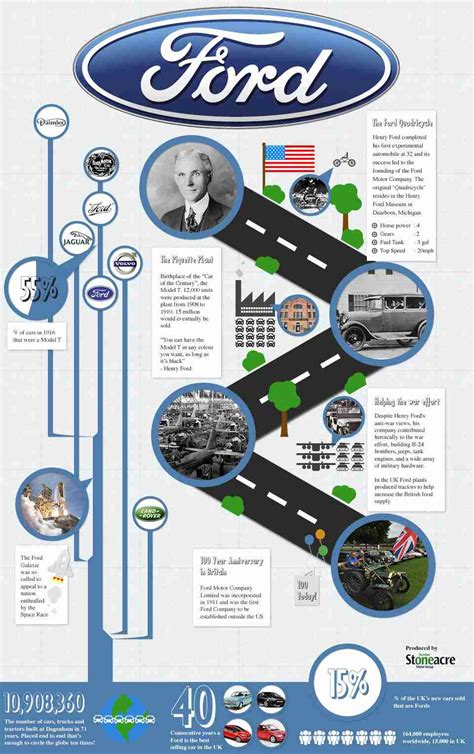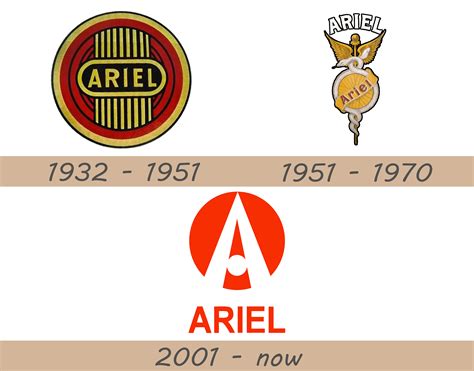Explore the founding and impact of Ford Motor Company, innovations in automobile manufacturing, the Model T’s influence on American society, Ford’s role in World War II, and the evolution of Ford’s marketing strategies.
Founding of Ford Motor Company
Contents
The founding of Ford Motor Company by Henry Ford in 1903 marked a significant milestone in the history of the automobile industry. With a vision to make automobiles accessible to the masses, Ford revolutionized the way cars were manufactured and sold.
Henry Ford’s innovative assembly line technique played a crucial role in making automobiles more affordable and efficient. By introducing standardized interchangeable parts and a division of labor, Ford’s production process drastically reduced the time and cost of building cars, making them more accessible to the general public.
The Model T, introduced in 1908, became a symbol of Ford’s commitment to making cars affordable for the average American. The introduction of this iconic car revolutionized the automobile industry and had a lasting impact on American society.
By prioritizing affordability and efficiency, Ford Motor Company set a new standard in the manufacturing and marketing of automobiles, laying the foundation for the modern car industry as we know it. The company’s commitment to innovation and accessibility has cemented its place as a pioneer in the automotive world.
Innovations in Automobile Manufacturing
In the history of the Ford Car Company, there have been numerous breakthroughs and advancements in the field of automobile manufacturing. One of the most significant innovations was the development of the moving assembly line by Henry Ford in 1913. This innovation revolutionized the production process by allowing for the mass production of vehicles at a much faster rate. The assembly line allowed for each worker to focus on a specific task, leading to increased efficiency and decreased production costs.
Another key innovation in automobile manufacturing by Ford was the introduction of interchangeable parts. By implementing standardized, interchangeable parts, Ford was able to streamline the production process and reduce the time and cost required for repairs and maintenance. This advancement allowed for greater efficiency in manufacturing and ultimately contributed to the affordability and accessibility of automobiles.
The use of new materials and technologies in manufacturing also played a crucial role in the history of Ford. Ford was at the forefront of utilizing lightweight materials, such as aluminum, to improve fuel efficiency and vehicle performance. Additionally, the incorporation of advanced technologies, such as computer-aided design and manufacturing, has allowed for the development of more sophisticated and reliable vehicles.
Furthermore, Ford has continuously invested in research and development to stay at the forefront of innovation in automobile manufacturing. This commitment to innovation has led to the development of advanced safety features, eco-friendly technologies, and autonomous driving systems. Ford’s dedication to pushing the boundaries of automobile manufacturing has continually shaped the industry and set new standards for vehicle quality and performance.
Impact of Model T on American Society
The Model T released by Ford Motor Company in 1908 had a significant impact on American society. The introduction of the Model T brought about a revolution in the transportation sector, making automobiles accessible to the masses. This led to a dramatic shift in the way people traveled, worked, and lived.
One of the key impacts of the Model T on American society was the transformation of the rural landscape. With the increased affordability and availability of cars, people were able to travel more freely, leading to a migration from rural areas to urban centers. This led to the growth of cities and the development of suburban communities.
In addition to transforming the physical landscape, the Model T also had a profound impact on the social and cultural fabric of American society. The increased mobility provided by the car allowed for greater social interaction and the spread of ideas and cultures. It also opened up new opportunities for leisure activities, such as road trips and vacations, which were previously inaccessible to many.
The widespread adoption of the Model T also contributed to the development of a consumer culture in America. As cars became more affordable, they became a symbol of status and freedom, leading to a surge in demand for automobiles and related goods and services. This shift towards consumerism and mass production would have a lasting impact on the American economy and lifestyle.
In conclusion, the Model T had a profound impact on American society, transforming the way people lived, worked, and interacted. Its influence can still be seen today in the way we travel, consume, and experience the world around us.
Ford’s Role in World War II
During World War II, Ford played a crucial role in the war effort through its production of military vehicles, aircraft engines, and other essential equipment. The company shifted much of its focus from civilian to military production in order to support the Allied forces. This transition allowed Ford to contribute significantly to the war effort and demonstrate its commitment to the defense of the nation.
One of the most notable contributions of Ford during World War II was the production of the B-24 Liberator bomber aircraft. The company’s Willow Run plant in Michigan became a key manufacturing site for the B-24, producing thousands of aircraft to support the Allied bombing campaign in Europe. This massive undertaking marked a significant milestone in the history of wartime industrial production and solidified Ford’s reputation as a crucial player in the war effort.
In addition to aircraft production, Ford also manufactured military vehicles and equipment to support the Allied forces. The company’s production of jeeps, trucks, and tanks played a vital role in supplying the military with the necessary resources for combat operations. Ford’s ability to adapt its manufacturing capabilities to meet the demands of wartime production was instrumental in supporting the war effort and ensuring the success of the Allied forces.
Furthermore, Ford was involved in various research and development projects aimed at enhancing military technology. The company’s engineering expertise and manufacturing capabilities were utilized to develop innovations in weaponry and communication systems, ultimately contributing to the advancement of military technology during the war. Ford’s involvement in these initiatives further demonstrated its commitment to supporting the Allied forces in their fight against the Axis powers.
In conclusion, Ford’s role in World War II was a testament to the company’s dedication to the defense of the nation and the support of the Allied forces. Through its production of military vehicles, aircraft, and technological advancements, Ford made significant contributions to the war effort and played a pivotal role in the ultimate victory of the Allied forces.
Evolution of Ford’s Marketing Strategies
Throughout the history of the Ford Motor Company, the company’s marketing strategies have evolved significantly to meet the changing demands of the marketplace. In the early days of the automobile industry, Ford focused on promoting its vehicles as a utilitarian means of transportation, appealing to the practical needs of consumers. As the automotive industry began to grow and competition increased, Ford recognized the importance of establishing a strong brand identity and implementing innovative marketing techniques to stand out in the market.
One of the pivotal moments in the evolution of Ford’s marketing strategies came with the introduction of the Model T. This iconic vehicle revolutionized the automobile industry and enabled Ford to adopt a new approach to marketing. The company implemented mass production techniques, which resulted in lower production costs and made the Model T more affordable to the average consumer. This affordability allowed Ford to market the Model T as a vehicle for the masses, appealing to a broader audience.
As the automotive industry continued to evolve, so did Ford’s marketing strategies. With the emergence of new technologies and the rise of the digital age, Ford adapted its marketing efforts to reach consumers through various channels, including television, radio, and eventually the internet. The company also started to focus on creating emotional connections with consumers, highlighting the values and lifestyle associated with owning a Ford vehicle.
In recent years, Ford has embraced digital marketing as a key component of its strategy, leveraging social media platforms, online advertising, and influencer partnerships to engage with consumers. The company has also placed a significant emphasis on sustainability and innovation, incorporating these values into its marketing campaigns to appeal to environmentally conscious consumers.
Overall, the evolution of Ford’s marketing strategies reflects the company’s ability to adapt to changing market dynamics and consumer preferences. By embracing new technologies and emphasizing the values associated with its brand, Ford has continued to position itself as a leading force in the automotive industry.












